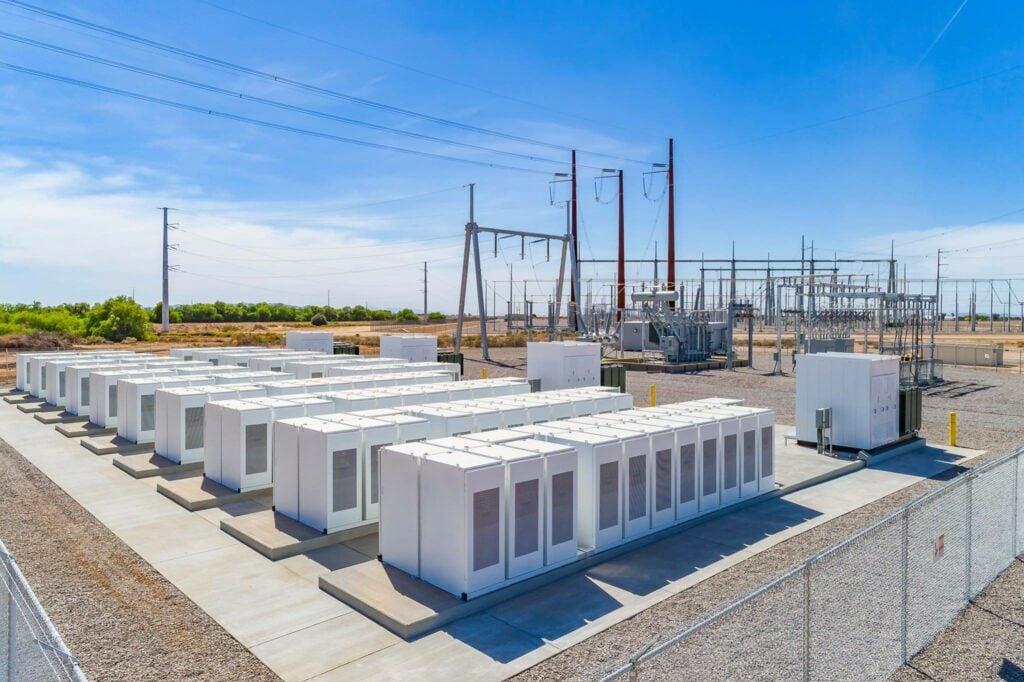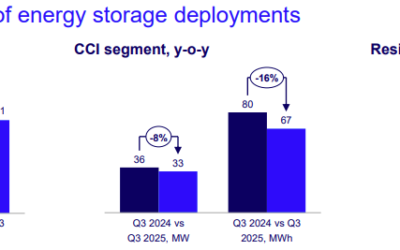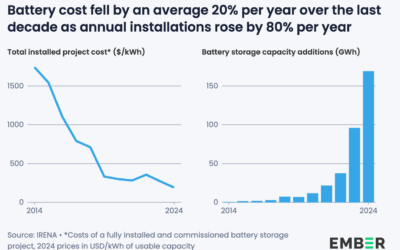
The global energy storage capacity has been on the increase as a total of 16GW was added last year, equivalent to a 68% of year-on-year growth, according to BloombergNEF (BNEF).
BNEF’s Energy Storage Market Outlook series unveiled that 2022 was the global energy storage’s record addition. However, the growth is expected to continue in the following years. BNEF is forecasting a 23% compound annual growth rate until 2030, with annual additions reaching 88GW or 278GWh.
Europe, the Middle East and Africa (EMEA) added 4.5GW of capacity last year. Residential batteries, particularly in Germany and Italy, led installations in the region, and this trend is expected to continue until 2025 thanks to high retail electricity prices and government incentive programmes supporting household deployments. Currently, the residential segment is proportionally the largest in the region.
EMEA will account for 24% of capacity deployed in 2030 and is expected to reach 114GW, or 285GWh, cumulatively by the end of 2030, with the UK, Germany, Italy, Greece and Turkey leading the growth. Pipeline projects in Greece, Romania, Spain, Croatia, Finland and Lithuania will also spur the growth.
Try Premium for just $1
- Full premium access for the first month at only $1
- Converts to an annual rate after 30 days unless cancelled
- Cancel anytime during the trial period
Premium Benefits
- Expert industry analysis and interviews
- Digital access to PV Tech Power journal
- Exclusive event discounts
Or get the full Premium subscription right away
Or continue reading this article for free
The Asia-Pacific region (APAC) is likely to dominate capacity growth in the coming years, representing 44% of additions in 2030. China is forecast to lead in deployments in the region, driven by local targets and compulsory renewable integration policies. China is expected to overtake the US as the largest energy storage market in terms of MW by 2030, as BNEF said it had increased its China forecast by 66% to account for new provincial energy storage targets, power market reforms and industry expectations supporting significant new capacity.
In Japan, subsidy programmes for utility-scale batteries were announced by federal and local governments, while South Korea set a 25GW, or 127GWh, storage target by 2036. Meanwhile, India announced a plan to fund 4GWh of grid-scale batteries in its 2023-2024 annual expenditure budget.
Therefore, the cumulative deployment for APAC is expected to increase by 42% to 39GW, or 105GWh, in 2030.
The Americas is forecast to represent 21% of annual energy storage capacity on a GW basis by 2030. Led by large-scale projects in California, the Southwest and Texas, the US is the largest market in the region. In the US, 7.2GW of utility-scale storage projects saw delays last year due to rising battery costs.
In other countries in the Americas, market reforms in Chile could pave the way for larger energy storage additions in Latin America’s nascent energy storage market, as should increasing volumes of solar and wind across Chile and Brazil, as well as grid challenges in Mexico due to underinvestment.





